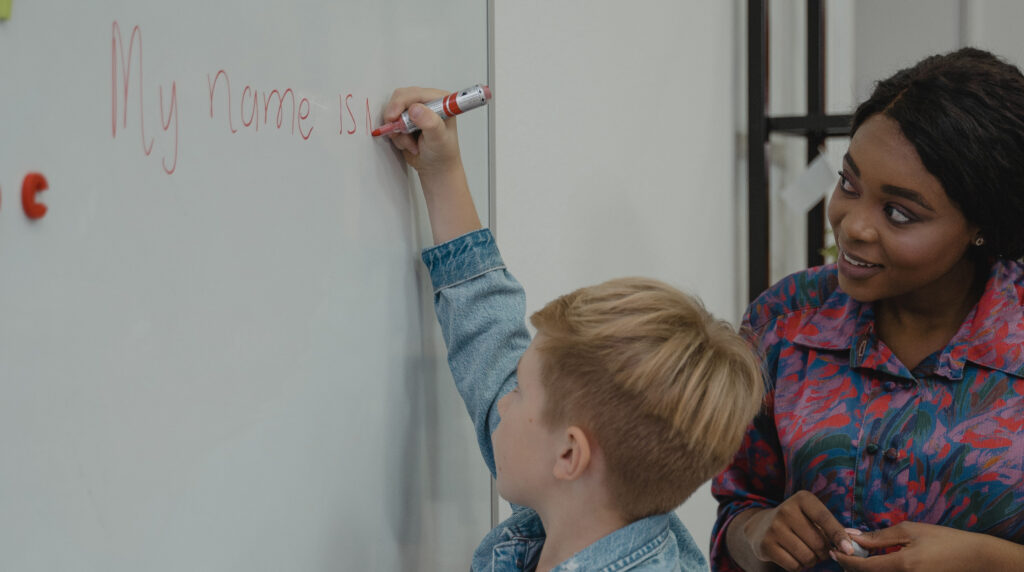There are numerous educational methodologies, and in our blog, we are addressing each one of them to provide you with a clear understanding of their characteristics and benefits for your classes. This time, we’re focusing on traditional methodologies and innovative methodologies. Let’s take a look at what these educational methodologies entail, how they differ, and how to make the most of them.
Let’s dive into the post!

What are traditional educational methodologies?
You probably already know what traditional educational methodologies are because, as the name suggests, they are the methodologies that have been used in education for a long time and are based on the teacher’s instruction, especially through oral transmission to a group of students.
Some characteristics of traditional educational methodologies include:
- Lecture-style teaching: The teacher presents theoretical content orally, transmitting knowledge in a one-way manner.
- Memorization of content: The aim of teaching is for students to memorize the content presented by the teacher.
- Limited student participation: Student participation is minimal and often involves answering questions or solving exercises.
- Assessment based on exams: Students’ knowledge is measured through written tests and exams, based on their ability to memorize content.
Despite being used for a long time and being effective in certain situations, traditional educational methodologies have some disadvantages, which are detailed below:
- They can be discouraging for students as they don’t require much participation and rely on rote memorization of concepts.
- They do not promote creativity and critical thinking as students have little room for creative expression and lack opportunities to think critically.
- They do not take into account individual skills and abilities of each student. All students are expected to follow the same pace, without considering that it may limit their potential.

What are innovative educational methodologies?
Now that we’ve discussed traditional educational methodologies, let’s explore innovative educational methodologies. These are educational methodologies that aim to promote student engagement in the learning process, fostering creativity and critical thinking.
These methodologies place the student at the center of the learning process, making them active participants in their education. This means that individual skills and needs are taken into account, providing a more personalized approach to teaching.
Innovative educational methodologies offer several advantages over traditional methodologies, including the following:
- Foster creativity and critical thinking in students: This helps students express their ideas creatively and develop problem-solving and critical analysis skills.
- Enable personalized learning: By considering the specific needs of each student, teaching can be adapted to individual cases, resulting in more effective and relevant learning.
- Promote teamwork: Innovative methodologies encourage teamwork and collaboration among students, helping them develop social skills.
- Increase student interest and motivation: This helps increase students’ commitment to their own learning and improves their academic performance.
Some examples of innovative methodologies include project-based learning, flipped classroom, cooperative learning, design thinking, competency-based learning, and self-directed learning, among others.

Tips for getting the most out of it with Additio
Whether you’re a fan of traditional methodologies or more inclined towards innovative methodologies, Additio makes it easy to work with both. Here’s how:
- Task and project management: With Additio, you can create tasks and projects that adapt to both traditional and innovative methodologies. This means you can create homework tasks as well as collaborative projects that require teamwork.
- Learning assessmentl: Additio allows you to assess student learning using various tools, including rubrics and quizzes. You can evaluate both quantitative and qualitative aspects, with options for peer assessment and self-assessment.
- Personalization: With Additio’s competency-based assessment possibilities, you can personalize teaching by viewing each student’s competency profile and tailoring their learning according to their strengths and weaknesses. This enables you to indicate the necessary adaptations for each student and their specific needs, fostering innovative educational methodologies and creating more meaningful learning experiences.
And remember, with Additio Starter, the free plan of Additio, you can do all of the above and much more!

And you, what methodologies do you work with?
With so many options to choose from, we’re sure that each and every one of our readers has their own favorite methodologies. What’s yours? Share it with us on social media: Facebook, Twitter, Instagram and Youtube.
We look forward to hearing from you!





